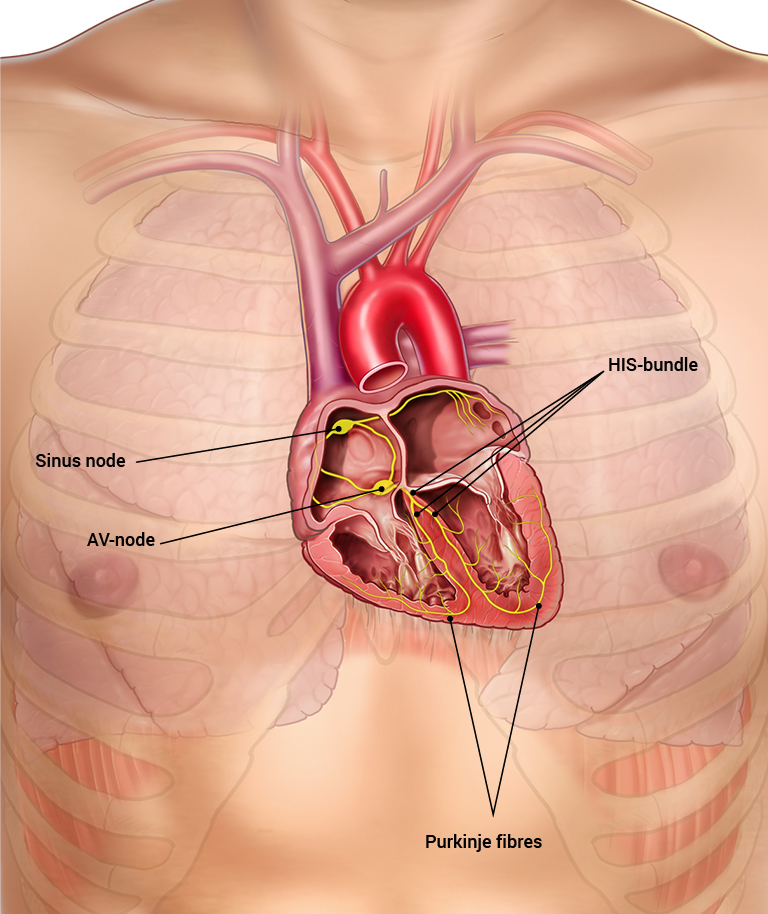The heart’s contraction is initiated by an electrical signal that originates in the right atrium at the sino-atrial node. From here the electrical conduction spreads throughout the atria through specialised conduction cells causing depolarisation of the heart muscle and atrial contraction. The electrical impulse reaches the atrioventricular node (AV node) located at the bottom of the atria. The electrical impulse is delayed at the AV node to allow the venticles to fill with blood. From the AV node the electrical impulse propogates down the Bundle of HIS penetrating the muscular wall of the ventricles. This divides into two branches called Purkinje fibres supplying each ventricle. The electrical impulse will run along this network and throughout the muscle wall and by depolarising the tissue, initiates the contraction of the ventricles from the bottom up.
One of the heart’s most distinctive features is that it does not need external stimuli for contraction. We say that the heart is self-excitable so if it is removed from the body it will continue to beat until it runs out of energy (ATP). That is, it self-generates its own electrical impulses. This feature is maintained by the pacemaker cells. The sinus node, AV node, bundle of HIS and Purkinje fibres are all pacemaker cells.
| Exercise: What is the normal resting heart rate in adults, children and infants? |
|---|
| Drag the different heart rates here to the sentence you think they belong to. |
Normal resting heart rate in adults
Normal resting heart rate, children
Normal resting heart rate, infant




